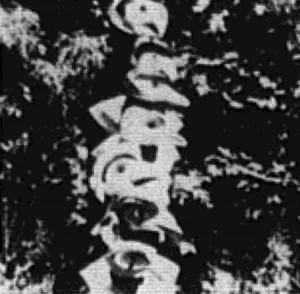
"Raven and his creation of the world and its inhabitants is an old Indian legend. This version is skillfully portrayed in pantomime, costume and setting. The grace and skill of the actors, an excellent narration and music score, combined with imaginative use of the camera, make this an engrossing experience for the audience. One of the Ten Best, this film was awarded the Northern California Council of Amateur Movie Clubs' Trophy for the best scenario film and will be included in the package" PSA Journal, Oct. 1963, 40.
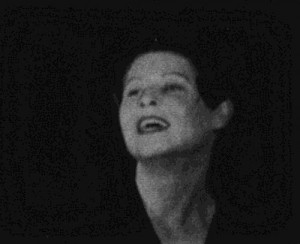
"A fantasy in which a writer relates a story about his walks along the seashore where he often meets a beautiful girl. She is quite strange, but beautiful, and they become good friends. There are lip-synch sequences where she tells him of her life, the rest he narrates in the first person. Elyra finally goes off, leaving behind a sea shell as a memento. In addition to an interesting story the film shows excellent technique, using montages, scenes of the sea, bottom, excellent editing. The Pizzos play the two parts in the story." PSA Journal, Nov. 1956, 22.
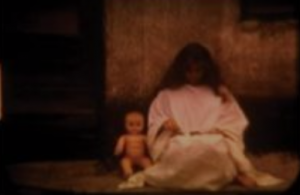
"La cinta hacía un recuento de imágenes oníricas, en los que una mujer (Paloma Woolrich) sale de su casa para recorrer diversos espacios que en realidad parecen determinados por su imaginación: desciende los escalones de una calle en una zona peatonal, se muestra aprisionada por una roca gigantesca, aparece catatónica en una azotea con un bebé de plástico, lucha con un hombre contrahecho, apalea a un hombre amarrado, duerme con su pareja y su bebé de plástico en un cementerio, aparece desgreñada en una construcción en ruinas en medio del campo, donde es burdamente pintada por otra mujer" (Vázquez Mantecón, 2012)
"The film made a recount of dreamlike images, in which a woman (Paloma Woolrich, goes out of her house to go through several spaces that actually seem determined by her imagination: she goes down the steps of a street in a pedestrian area, then she is imprisoned by a gigantic rock, she appears catatonic on a roof top with a plastic baby, she struggles with a crooked man, she beats a tied man, she sleeps with her couple and her plastic baby in a graveyard, she appears disheveled in a construction site in ruins in the middle of the country where she is roughly painted by another woman" (Vázquez Mantecón, 2012).
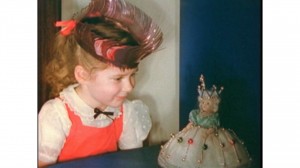
"The story of a little girl and the doll she wanted for Christmas. She asked for a fairy princess, got just a doll, but then the doll comes to life and dances, delighting the disillusioned miss and the film ends on a happy note." PSA Journal, Nov. 1956, 22.
"First two women to travel to space. The rocket heads to Mars but misses and ends up on an unknown planet where the women have strange adventures." Sacramento Public Library.
"A rather clever and well-executed story of the rocket engineer who recovered the important capsule when it returned to earth. The rocket launching is done with miniature and to the credit of the filmer. The rocket engineer does not fully appreciate what he has accomplished until it is too late. Sound effects accompanying the picture create a sense of realism" PSA Journal, Nov. 1959, 48.
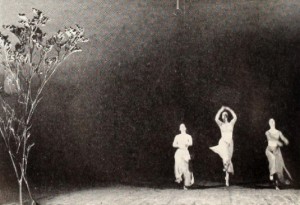
'In Fancy Free' is a fantasy, imaginatively planned, photographed, and edited, which pictures the day-dreams of a young woman as she sits by the window looking out on her garden. Nearby objects, such as a Buddah, a porcelain figure of a dancer, a flower, and the passing of friends by her house set her to reflecting on her greatest wish -to be a dancer. She becomes absorbed in these dreams as a participant and the dances she imagines are laid against colorful and symbolic backgrounds. As the picture unfolds, narration by a young woman with a remarkable appealing voice tells the story of the young girl's desires, and then in the closing sequence, we learn in a brief heart-tugging climax that the girl, a cripple, can never take part in the activities of her dreams. The production is replete with effect lighting and special photographic effects -a forte which Turner ably established in his earlier productions. The dance numbers demanded skill, both in direction and execution; and the musical score, especially prepared by members of the student orchestra of the college where Turner is an instructor, is a vital and moving contribution to the picture." American Cinematographer, May 1952, 222.
"Save for a few opening and closing scenes, In Fancy Free is creative film fantasy of the highest order. For in it Glen H. Turner, beginning only with an idea, has evoked from his own mind and heart and spirit a superb and moving visual drama. As with all truly great art, the theme of In Fancy Free is essentially simple. At the film's opening a grave and tranquil girl is seen seated by a sunny window overlooking a rose garden. Laying aside her book amid these halcyon surroundings, she daydreams to herself of that which in all her life means most — the joys of dancing. There follow then four sequences of modern ballet, their themes suggested by objects or activities around her — an Oriental figurine, a string of paper dolls, a tennis game and the sunny, nodding roses. As these ballets end, we learn — in a brief, throat-tightening climax — that never, in her lifetime, can the girl take part in them. Although thematically quite different, In Fancy Free is a direct descendant of One Summer Day, with which (on 8mm. film) Mr. Turner won the Maxim Memorial Award in 1949. For in both fantasies the producer has, with sound dramatic instinct, related his world of pulsing wonder directly with the world of poignant reality. Thus it is that Mr. Turner's brilliant creative imageries take on a meaning above and beyond their mere technical virtuosity. The story development, dance themes, abstract settings and, needless to say, the camera work of In Fancy Free are all original creations by the producer. Mr. Turner enjoyed, however, a wealth of heart-warming collaboration in bringing this picture to its full flowering. An assistant professor of art at Brigham Young University, he was able to enlist the enthusiasm of countless other creative spirits. Thus it was that an original and brilliant musical score was written directly into this film dream. Thus, too, that this music was performed for recording by the university orchestra and that the dance themes were developed, almost step by step with the picture's progress, by the college ballet group. There will be those among the carping who are sure to complain that with this cooperation and those resources any amateur could produce a winner. To these few our unequivocal answer is "Non-sense!" Great art is created by the mind and heart of the artist — not by the hands of those who help him. That Mr. Turner could integrate these efforts into his own filmic concept is only another measure of this man as a truly creative cine artist." Movie Makers, Dec. 1951, 392-393, 410.
"Animated puppets, dogs in this case. Synchronized with a song of the same title and cleverly done." PSA Journal, Nov. 1956, 45.
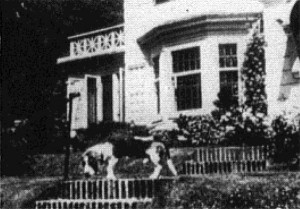
"Humphrey, a loveable dog built low to the ground and with big ears. He does for a playful run in the park. He flushes out a cup and this releases the genie who extends three wishes to Humphrey. Our "fido" wishes himself into the form of man. But in the actions that follow, he is still Humphrey. In the end genie returns Humphrey to h is conventional self and there is a captivating happiness in again being a dog" PSA Journal, Nov. 1960, 40.
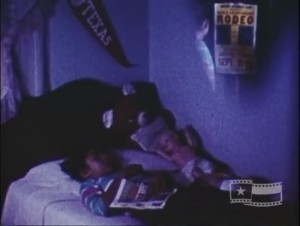
"This amateur film from Ramon Galindo is titled 'Josephine’s Dream' and uses home movie footage and special effects to tell a story. A girl is reading in her bedroom when she falls asleep and begins dreaming of going to the rodeo, a dream sequence we can see through Galindo’s use of special effects. The film then takes us to a rodeo in Austin in 1962, capturing scenes of bucking broncos, calf roping, lasso tricks, bareback bullriding, rodeo clowns, horse tricks, and, most notably, a performance by actor and singer Michael Landon. Landon sings with a trio of cowboy guitarists, likely performing his 1957 single 'Gimme a Little Kiss (Will 'Ya' Huh)' that was rereleased in 1962 to capitalize on his newfound fame in his role as Little Joe Cartwright on the television series 'Bonanza'." Texas Archive of the Moving Image.
Total Pages: 5